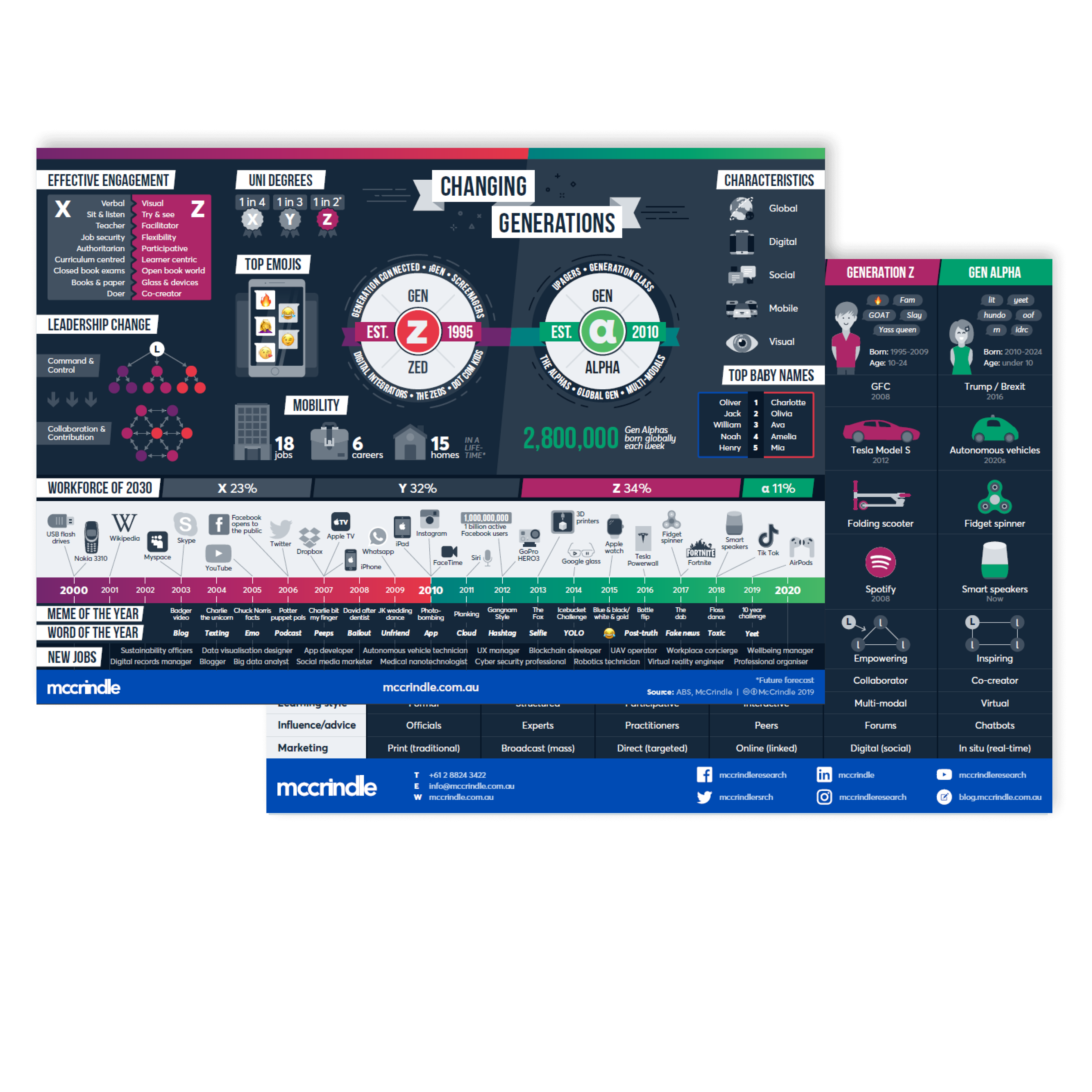Generation Z
Why understanding a multigenerational workforce is key

In recent times the realities of massive generational change have dawned on business leaders. While the issues of an ageing population and a new attitude to work have been emerging for some time, for many organisations it has been a sudden awakening. Dealing with these demographic changes and specifically how to recruit, retain and manage new generations of workers has become one of the biggest issues facing employers today.
Changing times, changing generations
As of 2019, there are now more Australians born since 1980 than before it. This means that Gen Y (born from 1980 to 1994), Gen Z (born from 1995 to 2009) and Gen Alpha (born since 2010) comprise more than half of the population. Additionally, Generations Y and Z now comprise the majority of the workforce, outnumbering Generation X and the Baby Boomers for the first time. This will see Generations Y and Z dominate as workers, consumers, new household formers and, therefore, a key demographic to engage with.
When it comes to keeping up with the trends and preparing for the future, the focus tends to be on technological shifts. Clearly the ever-changing technologies in business and in life are redefining our world. Yet, interestingly, it is the social and demographic changes that have more profound implications on our future than even the massive technological ones.
The key to business success, therefore, is to understand these attitudinal shifts, social trends and the mindset of the ever-changing customer and employee. Key to achieving this is social research – the study of human behaviour.
Understanding the mutigenerational workforce essential for thriving organisations
The world of work is changing, and with more generations mixing in the workplace than ever before, it’s important to understand their differences and new ways of engagement. Take job tenure, for example. A school leaver today is expected to have 18 jobs across 6 careers in their lifetime. Let’s not expect the workplace to shift back to the days of 15 years average tenure, and dutiful obedience to the boss. These new realities which are personified by Gen Z are manifested by most workers today regardless of age. We’ve all responded to the 21st Century world of work.

The point is that we have entered a new era and while employers need not react to every whim of a new generation, they cannot hold fast to the old and expect the emerging generations to conform. These new workplace entrants have had two decades of cultural shaping and there’s little an employer can do to change this.
By understanding the different generations that comprise a workforce, leaders can work out the best way to engage and lead the diverse people in their team. This is key not only for thriving employees but thriving workplaces and organisations as well.






